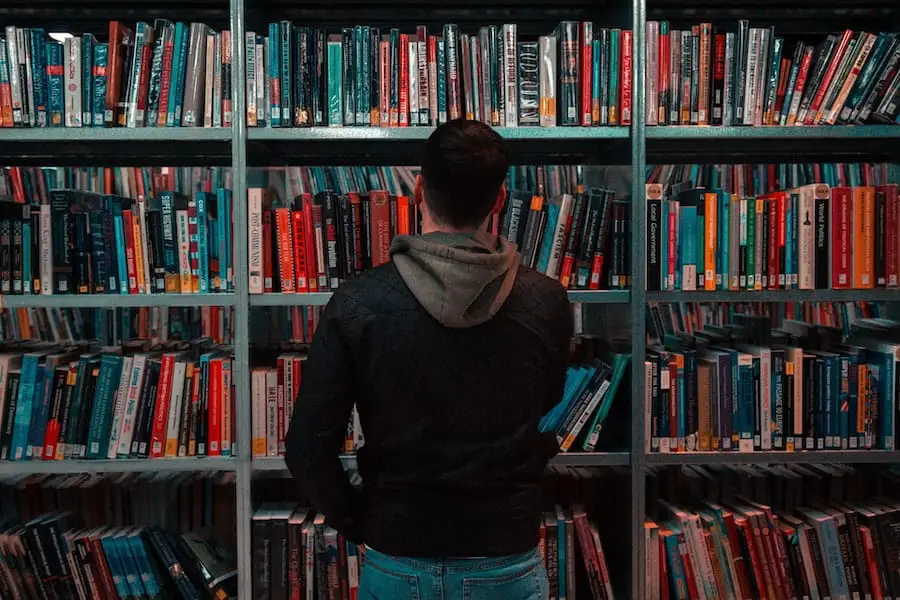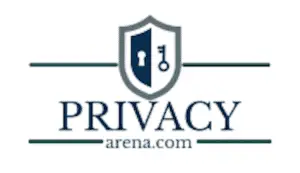When you’re checking out a book or two at your local public library, the thought of being under video surveillance may not cross your mind. Most of the time, you may not consider surveillance in public places as a form of security at all. So, when you’re reading at the public library, are there cameras recording you?
Most public libraries have video surveillance systems in place to monitor for suspicious behavior, deter misconduct and crime, help with criminal incident investigations, and improve safety of the facility, its staff, and its visitors. Keeping public libraries safe with surveillance cameras is not meant to, nor should it, infringe upon your privacy.
While being under video surveillance may make you second guess visiting the library, knowing your rights and protections is essential, and can give you the reassurance you need. By being familiar with library privacy laws and their meaning, you will have taken a significant step in understanding your right to privacy in a public library.
Why Are There Cameras in Public Libraries?
Security cameras have been used in public libraries for a very long time for the purpose of public and property safety and to monitor for malicious behavior. Private residences and businesses also use video surveillance systems for the same reason, hoping to prevent crime before it happens or to help with investigations into suspicious incidents.
In a library, however, the balance between safety and privacy is paramount.
Video surveillance in public libraries helps record and store information that may be helpful for legal reasons. A closed-circuit tv system will also allow security personnel or the front desk to strictly monitor what is happening throughout the building to keep its patrons and the property safe. And like in other public places, video surveillance is obviously not allowed in private library areas such as the restrooms.
Library Privacy Laws
Video surveillance has become the norm in many public places, such as at crosswalks, parking lots, in hospitals, and in airports, to name a few. While in public places, there is a general lack of expectation of complete privacy, in a public library, patrons’ rights regarding their privacy and confidentiality are very important and have always been protected.
According to the American Library Association (ALA), a library user’s privacy refers to their right to use library resources for unobstructed research and seeking knowledge in any topic without the subject of their research or interests being questioned. The ALA states that a patron’s right to intellectual freedom from judgment and surveillance is crucial to free thought and speech.
Libraries are also responsible for the confidentiality of their user’s personally identifiable information, whether in physical or digital format.
The same privacy rights for library users and the library’s responsibility for the confidentiality of its users’ personally identifiable information apply when considering video footage from surveillance cameras in a library.

The library system protects the First Amendment in the United States, allowing uninhibited access to free and open information. While this is important to the rights of American citizens, video surveillance may seem like an intrusive conflict of interest and that’s why it is important to have a clear policy in place regarding the use of video surveillance cameras and how the footage will be used, stored, and accessed.
In addition to video surveillance systems, patrons are also protected from being video recorded by other individuals in the library. Removing a patron filming other patrons is a way of dealing with this privacy issue. While there are no consistent laws across all public libraries, it is left up to the discretion of each locality to dictate what is a violation.
In Canada, the Toronto Public Library, the country’s largest public library, follows the guidelines set out by the Information and Privacy Commissioner of Ontario, and the privacy requirements of the Municipal Freedom of Information and Protection of Privacy Act (MFIPPA), to ensure the privacy of its patrons is protected while maintaining the safety and security of the library facilities, its staff, and visitors.
The three main guidelines of the Toronto Public Library’s video surveillance policy are:
- Surveillance camera use is guided by a goal to limit the intrusion into library facility’s normal operations.
- Video surveillance systems are only used when needed based on predetermined criteria.
- Surveillance footage is only monitored or reviewed for asset protection and safety.
How Do I Know if There Are Cameras in My Library?
When video recording is being used at any public library location, the library staff is responsible for informing users about the presence of surveillance cameras. This is usually in the form of signage that clearly indicates that video surveillance equipment is being used to monitor the facility. This public information will enable visitors to make an informed decision about their personal use of the space.
Library security cameras are also usually installed in clearly visible locations as the use of hidden cameras in public places is illegal in most states. So, if you’re wondering if there are cameras watching you while you’re reading, just look up. You’ll most likely spot one staring right back at you!
Cameras are usually installed throughout the library in areas of high traffic and in some instances, in areas that may be a little more secluded. Monitoring secluded areas ensures that while a person may be out of sight, a camera can still catch any illegal activity or dangerous behavior.
How Can a Library Protect My Privacy?
So, now that you know that most libraries use video surveillance systems, how can you ensure that your privacy is being protected? Since each public library is different, it is vital that they individually decide what measures will be taken to ensure the privacy of their patrons with policies.
Policies may address privacy issues in libraries like:
- The use of practices that keeps the collection of personally identifiable information while using library services to a minimum.
- Developing guidelines and procedures for storage, access, and destruction of security camera footage.
Surveillance recordings are usually stored in a secure location with limited access for a predetermined time (usually 30 days but may be shorter depending on local policy or system storage capacity limitation). After 30 days, the footage is destroyed, unless it was required for an incident investigation or legal dispute, in which case it may be kept for a longer period as required by local and state laws.
By controlling who has access to library records of video surveillance, a public library can assure that their patron’s privacy will be kept safe. The library should limit this access to a minimal number of viewers as necessary. In addition, the library staff should only show the records to law enforcement if it is court-ordered or subpoenaed.
Libraries can further guarantee the privacy of their patrons by implementing policies that deal with visitors filming on their premises, in particular when other visitors are captured, or have the potential of being captured, in the footage. This is one of the common privacy issues in libraries related to the use of video recording devices in libraries.
The degree of limitation on filming in libraries will be different for each library. While some libraries may be sought after as filming locations due to their history or aesthetics and may have policies that are more accommodating to allow visitors to film in the library, and while library patrons have no expectation of privacy in public spaces within the library, library policies should be implemented to make sure that no information regarding patrons’ use of library services, or their research history is revealed in any captured footage.
Lastly, library workers are not entitled to the same privacy rights as library patrons when it comes to being recorded on cameras. This applies to video footage captured by security cameras and to filming by library users or members of the public exercising their First Amendment rights to access and film in any public space. Library workers are however entitled to privacy in private and staff-only spaces, and these areas should display signs that clearly indicate that members of the public are not permitted access.
Conclusion
Video surveillance systems in libraries provide a way to monitor the safety and security of library property, visitors, and staff. However, there are concerns about the privacy aspect of having a camera in an area where patrons are accessing private information.
Access and privacy have long been standards upheld by the public library system in the United States and Canada. When libraries use video surveillance systems and implement policies to ensure that library records are kept private and secure, there will be increased privacy protection for patrons using the library.


